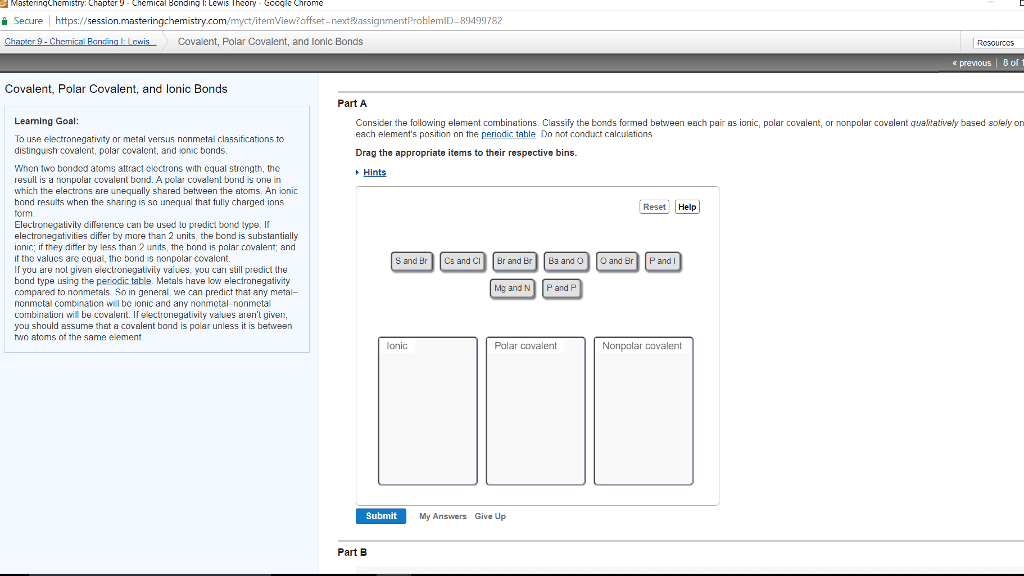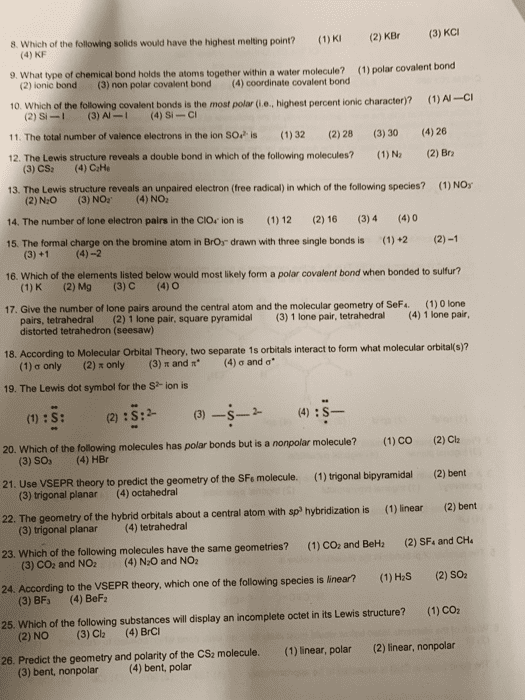CHEM 101 Lecture Notes - Lecture 7: Electrical Polarity, Chemical Polarity, Covalent Bond
24 views4 pages
4 Nov 2016
School
Department
Course
Professor
Document Summary
Vsepr theory helps predict geometry using the number of electron pairs. Goal is to maximize the distance between the electron groups. Note: a lone pair of electrons occupies more space than a bonding pair of electrons. Tendency of an atom to attract an electron. Least electronegative element= cs, fr (lower left corner) Ionic bond (the most polar because of transfer of electrons) Nonpolar covalent bond (equal sharing of electrons) Polar covalent bond (unequal sharing of electrons) Polar bonds have dipole moments (a measure of polarity) There are 3 types of dipole moments. Electric: electrical polarity of a system of charges. Molecular: electric dipole moment of a molecule. Cl is more electronegative and will have a stronger pull on the electrons (which results in polarity) Net dipole moment is in an upwards direction (towards the lone pair of electrons in a bent structure) To be a polar molecule it must have. Polarity affects the intermolecular forces of attraction.
Get access
Grade+20% off
$8 USD/m$10 USD/m
Billed $96 USD annually

Homework Help
Study Guides
Textbook Solutions
Class Notes
Textbook Notes
Booster Class
40 Verified Answers
Class+
$8 USD/m
Billed $96 USD annually

Homework Help
Study Guides
Textbook Solutions
Class Notes
Textbook Notes
Booster Class
30 Verified Answers
Related textbook solutions
Chemistry: Structure and Properties
2 Edition,
Tro
ISBN: 9780134293936
Basic Chemistry
5 Edition,
Timberlake
ISBN: 9780134138046
Principles of Chemistry Molecular Approach
4th Edition,
Tro
ISBN: 9780134112831
Chemistry: Structure and Properties
2nd Edition,
Tro
ISBN: 9780134293936
Principles of Chemistry Molecular Approach
3rd Edition, 2014
Tro
ISBN: 9780321971944
Chemistry: A Molecular Approach
3rd Edition,
Tro
ISBN: 9780321809247
Chemistry: A Molecular Approach
5th Edition,
Tro
ISBN: 9780134874371
Principles of Chemistry: A Molecular Approach
4th Edition,
Tro
ISBN: 9780134895741
Chemistry: The Central Science
14th Edition, 2017
Brown
ISBN: 9780134414232

